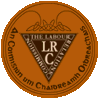
| RESEARCH & PUBLICATIONS | |
| • | Introduction |
| • | Guide to Labour Law |
| RESEARCH | |
| • | Competitive Strategies and Employee Relations in the Irish Retail Sector |
| • | A Strategic Analysis of the Irish Food Industry (1998) |
| PUBLICATIONS | |
| • | The Euro - Implications for Human Resource Strategies for the 21st Century (1997) |
| • | Improving Industrial Relations - A Strategic Policy |
| • | Annual Report 1997 |
| CODES OF PRACTICE | |
| • | Duties and Responsibilities of Employee Representatives and the Protection and Facilities to be afforded them by their Employer |
| • | Dispute Procedures, Including Procedures in Essential Services |
| • | Disciplinary Procedures |
| • | Sunday Working in the Retail Trade |
| • | Compensatory Rest Periods and Related Matters |
• |
What can we do for you? |
| • | What's new |
| • | F.A.Q. |
| • | Links |
| • | Site Map |
| • | Students |
| • | Join our Mailing List |
| • | Home |
Tom Johnson House,
Haddington
Road,
Dublin 4.
TEL +353 1 6136700
FAX +353 1 6136701
EMAIL info@lrc.ie
ii) Structure of Irish Food Industry
Table 2 presents the structure of the food industry and illustrates changes in key elements of the structure between 1992 and 1994. The total number of enterprises* in the industry has dropped from 691 in 1992 to 642 in 1994. In the meat sector the number of enterprises has increased whilst the number of local units or factories has remained static, and employment has increased. This picture contrasts markedly with the dairy sector where there is evidence of ongoing restructuring, consolidation and the emergence of larger scale units resulting from drives towards greater competitiveness. The number of local units has fallen by more than 50% with a 25% drop in the number of companies in this sector. In the cereal/grain milling sector there is evidence of a drop in the number of local units and companies as the sector regroups to remain competitive under the GATT reforms. A small amount of rationalisation has taken place in the fish-processing sector driven by the market and consumer demand coupled with EU regulatory and quota interventions. However this sector by its very nature will remain fragmented with the 88 companies scattered around the coast. Prepared consumer foods are difficult to identify from the statistics as they are represented across all the sub-categories. It is an area of increasing development with the area reported to be growing at approximately 10% per annum. (Sunday Tribune, November 1997).
*defined as the smallest combination of legal units that is an organisational unit producing goods or services
Table 2: Structure of Irish Food Industry 1992/1994

The food industry is characterised by small factories or units. Approximately three-quarters of the units/factories (73%) employ less than 50 employees and only 3% (29 companies) employ more than 250 employees. The 29 large units/factories are in the meat, dairy and chocolate confectionery sectors. A majority of food companies (89%) are Irish owned and 75% of employment in the industry is in indigenous Irish owned companies. On the basis of the most recent data available on grant allocation for new industry supplied by Forbairt, 22% of the industry was ‘new industry’ in 1994. Most start-ups are occurring in the meat industry (39%), with 21% of start-ups occurring in the dairy industry.
"There has been a greater number of start-ups in the last year than ever before. There’s an insatiable demand for new product varieties … fundamental changes are taking place at the level of food purchasing and consumption"
(O’Connell, 1997).
Numbers employed in the industry have
remained relatively constant. The largest employment is in the meat and
dairy primary processing sectors, which have maintained and slightly
increased employment levels while under pressure to become more market
focused. The workforce in the industry is predominately male (except in
the poultry and fish processing sectors) and works on average 40.7 hours a
week (1994 CSO). Unionisation of workers in the industry is high. SIPTU
represent approximately 50% of the workforce of which approximately 47%
are employed in the primary processing area and another 37% in secondary
processing. The remainder 16% are employed in elsewhere in the food
industry. Other trade unions representing workers are MSF, TEEU, and the
Dairy Executive Association (1,000 members). The MSF re p resent mostly
management, salespersons, laboratory technicians and researchers.
NAVIGATION GUIDE
![]() Previous
Page - Next
Page
Previous
Page - Next
Page
PAGE NO:
1
| 2
| 3
| 4
| 5
| 6
| 7
| 8
| 9
| 10
| 11
| 12
| 13
|
14
| 15
| 16
| 17
| 18
| 19
| 20
| 21
| 22
| 23
| 24
|
25
| 26
| 27
| 28
| 29
| 30